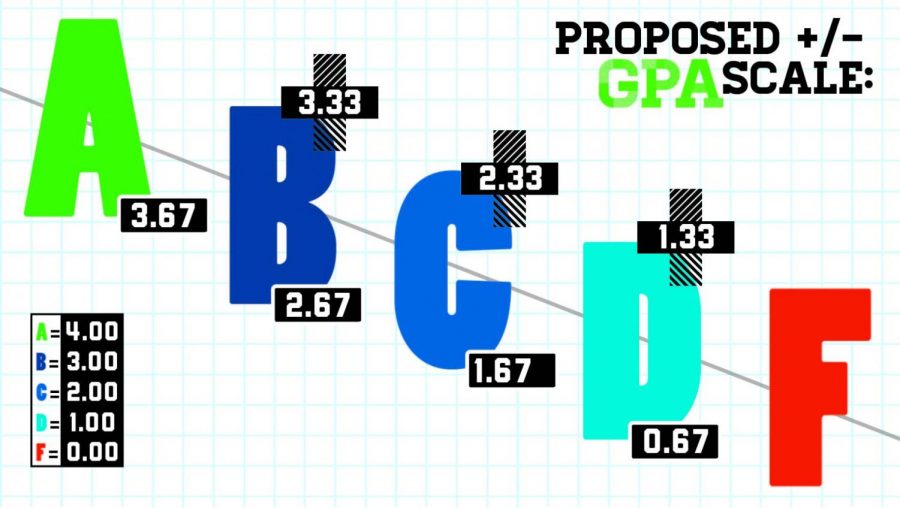Plus/minus grading system goes into effect in fall, faculty have choice to use it or not
The Board of Trustees has approved the plus/minus grading system.
The Trustees voted on it Feb. 19. The system will go into effect Fall 2015. It will be up to faculty whether to use it or stay with the current grade system.
“It’s not a policy, and it can’t be mandated, so it’s really just having an extra drop down menu, ” Russell Frohardt, spokesman for the ad hoc committee on the plus/minus grading system, said. “When we go to assign grades now, we’ll have the option of using pluses and minuses if we want to, down through the C+, but there’s no policy that says that (we) have to.”
There was one slight issue with transparency, however, because the Academic Council held an impromptu vote via email to amend the plus/minus proposal as they had approved it on Feb. 2.
The email, which was sent out by Vice President for Academic Affairs Mary Boyd on Feb. 6, asked for all 23 voting members of the Academic Council to cast their vote in favor of or opposed to a new provision to the plus/minus proposal.
“(In the provision,) the C-, D+ and D- were removed,” Frohardt said. “The reason that it was given to the committee was that there was a provision in there that classes that are currently being passed with a C. The initial recommendation was that you be able to pass with what is now a C-, but since a C- is now less than a 2.0 (GPA), that creates problems for people for academic standing and financial aid. The deans did not support that idea, so we had to revise that provision and then send it back through Academic Council for a second vote.”
The vote was conducted via email so that the plus/minus grading system would get resolved before the Board of Trustees meeting.
“The board was meeting the following week, so we couldn’t wait for another in-person meeting if we wanted to get to the board,” Frohardt said. “If we missed this board meeting then (the plus/minus grading system) wouldn’t go into effect next year.”
Seven voted yes, five voted no and two abstained. Voting quorum was met, and the motion passed in both the Academic Council and the Graduate Council.
From there, the initiative had to pass through the vice president for Academic Affairs and the president of the university to make sure they were both in agreement with the councils’ decision.
“The Oversight and Academic Affairs Committee passed it and presented it then as a recommendation to the full board, and the full board passed it,” Sister Donna Jurick, the staff liaison to the Institutional Oversight and Academic Affairs Committee, said.
In some cases, the Board of Trustees is not required to approve policies.
“In this case, because it was a university-wide initiative, it did require the Board of Trustees approval,” Jonathan Edwards, student representative for the Academic Council, said.
The next step in the plus/minus grading system is educating faculty and students about how this will affect future grades.
“I’ll update the faculty this Friday at the faculty senate meeting, and then I still have to work with the vice president for Academics on how we want to (promote) this community-wide,” Frohardt said.
Follow Samantha for more!







